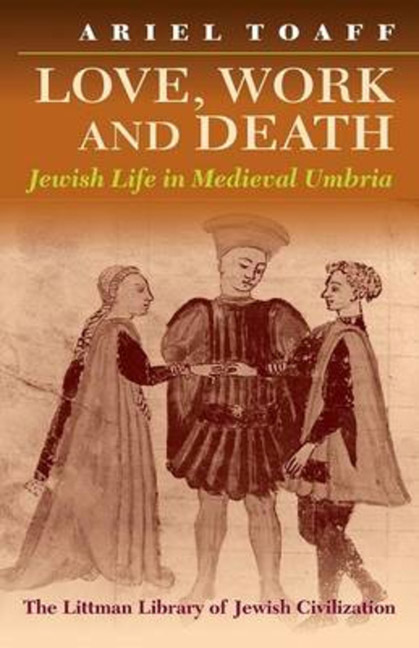Book contents
- Frontmatter
- Contents
- List of Figures
- List of Tables
- Abbreviations
- Note on Currency, Weights, and Measures
- Map showing Jewish settlements in Umbria
- Introduction
- 1 Sex, Love, and Marriage
- 2 Love of Life and Intimations of Mortality
- 3 Meat and Wine
- 4 The House of Prayer
- 5 Outcasts from Society
- 6 Witchcraft, Black Magic, and Ritual Murder
- 7 Converts and Apostates
- 8 The Pattern of Discrimination
- 9 Merchants and Craftsmen
- 10 Doctors and Surgeons
- 11 Banks and Bankers
- Bibliography
- Index
5 - Outcasts from Society
- Frontmatter
- Contents
- List of Figures
- List of Tables
- Abbreviations
- Note on Currency, Weights, and Measures
- Map showing Jewish settlements in Umbria
- Introduction
- 1 Sex, Love, and Marriage
- 2 Love of Life and Intimations of Mortality
- 3 Meat and Wine
- 4 The House of Prayer
- 5 Outcasts from Society
- 6 Witchcraft, Black Magic, and Ritual Murder
- 7 Converts and Apostates
- 8 The Pattern of Discrimination
- 9 Merchants and Craftsmen
- 10 Doctors and Surgeons
- 11 Banks and Bankers
- Bibliography
- Index
Summary
VAGRANTS, BEGGARS, AND THE IMPOVERISHED
IF it is true that the entire Jewish population was the object of more or less violent discrimination in medieval Italian society, it is also true that Jewish society itself rejected or excluded some of its members, with a logic similar to that at work in Christian circles. We can distinguish at least three levels of marginalization: that of the Jewish community as a whole, as a religious minority; that of outcasts from Jewish society, consisting mainly of Jews who threatened the established order; and that of those individuals banished from all society, Jewish and Christian, because of their deviant behaviour.
At the first level, Jews were legally marginals in medieval Italian society, even if the process of exclusion was not constant, and indeed not always clearly discernible during the early medieval period. I believe that Raffaello Morghen is basically correct when he says:
Jewish civilization in the Middle Ages did not exist separately or removed from contemporary Christian or Muslim society; it occupied its own area of traditional spirituality and thought, but not simply as a world closed in on itself, as in the modern age, without influence, contributions or exchanges with other worlds. It was identified with the history of a people and a religion which was accorded a clearly defined legal and ethical status and treated, if not on a par with other peoples or faiths, at least with broad understanding and tolerance.
The first signs of real exclusion are found, at least in Italy, after the middle of the fifteenth century, just before the founding of the first Monti di Pieta. As we shall see, it was only in the last quarter of the century that the process of exclusion became determined and thorough going. The almost universal obligation to wear a distinctive sign, like lepers, heretics, and prostitutes; the proliferation of accusations of ritual murder and defamation of the Christian religion; and reiterated attempts by municipal governments to force Jews to live in a particular neighbourhood (the precursor of the ghetto) all point to an irreversible strengthening of this tendency. At first characterized by phases of exclusion alternating with phases of reintegration, the exclusion of Jews gradually turned into a relentless process.
- Type
- Chapter
- Information
- Love, Work, and DeathJewish Life in Medieval Umbria, pp. 100 - 117Publisher: Liverpool University PressPrint publication year: 1996



